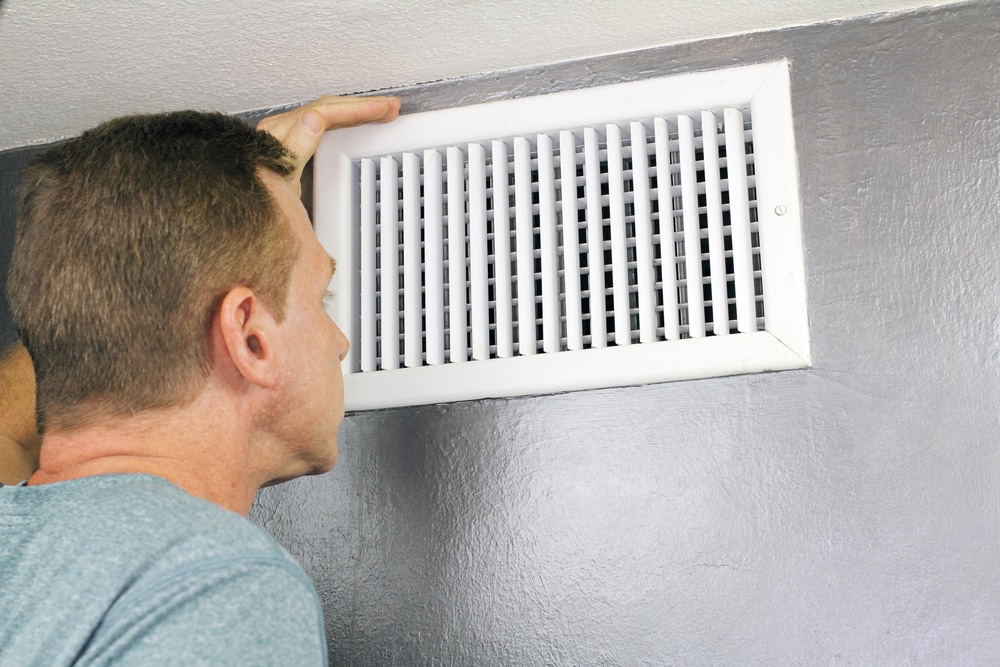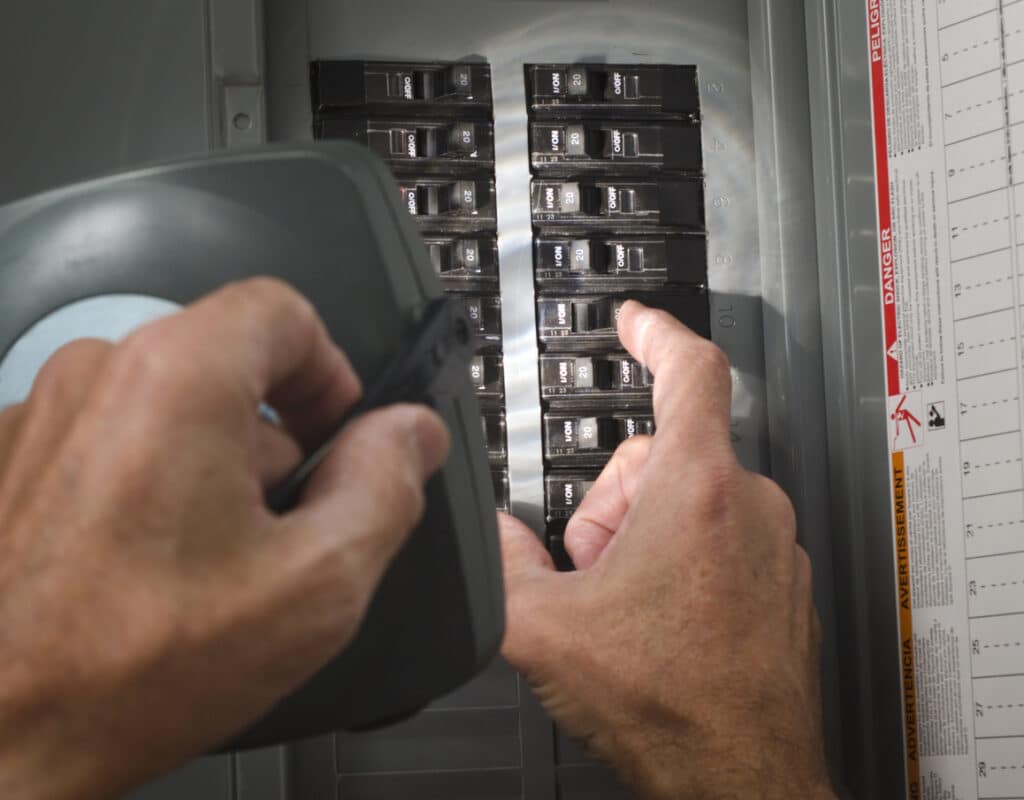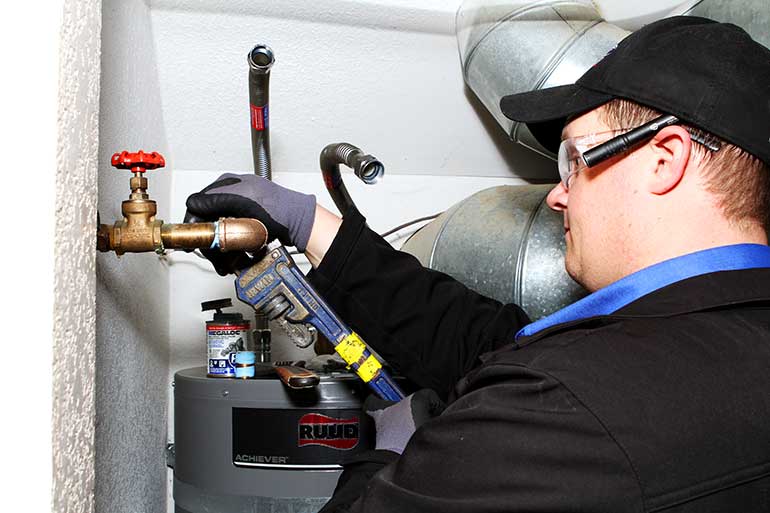Likely you have at one point heard that fats, oils and grease (FOG) shouldn’t be poured down the kitchen sink. Why is that? The EPA estimates that at least 10,350-36,000 sanitary sewer overflows occur per year in the USA, with approximately 47% of the backups being grease-related. These overflows from manholes, bathtubs and toilets create environmental problems, tie-up traffic, and flood homes and businesses causing thousands of dollars of damage.
As large of a problem FOG buildup is for everyone involved, it is important to be educated on the issue and to help educate others.
Some questions that this article will answer are: What are some common foods/liquids that contain fats, oils, and grease? What exactly happens when fats, oils, and grease enters your home or building’s sewer system? What can be done to stop grease from damaging your plumbing infrastructure?
Common Substances Containing Fats, Oils and Grease
The following are some substances that contain fats, oils and grease:
- Meat Fats
- Lard
- Grease
- Cooking Oil
- Sauces
- Butter
- Margarine
- Liquid From a Slow Cooker
- Food Scraps
What happens when fats, oils and grease are poured down the sink?
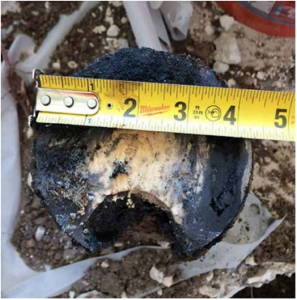
Figure A – Top view of a section of 4 inch cast iron pipe from a condominium experiencing severe FOG buildup.
When warm fats, oils, and grease are poured down the sink or flushed down the toilet they may not travel very far through your pipes before they begin to form large, nasty conglomerations with other debris and chemicals and stick to the walls of your pipes. These FOG deposits could cause future sewer backups in your home, condominium, restaurant, or other building.
The results of FOG buildup in pipes include:
- Severe reduction in pipe flow capacity
- Complete blockages
- Slow drains
- Sewage backups
- Contact with disease carrying bacteria
- Unnecessary costly repairs
- Contamination of water sources
Preventing the Buildup of Fats, Oils and Grease
For residential buildings such as single family homes or condominiums, the prevention of fat, oil and grease buildup typically lies with each individual. Some best practices to avoid the gross and costly results of FOG buildup include the following:
- Recycle! Pour used cooking oil and grease into a large, sturdy plastic or wax-coated sealable container, no larger than 5-gallons, and take it to a Waste Management Facility or similar facility when the container is full.
- Wipe greasy cooking utensils with a paper towel before washing. A large amount of FOG buildup comes from washing greasy dishes.
- Minimal use of garbage disposals will help reduce blockages in your kitchen sinks from food particles combining with grease in the pipe.
- If you do not wish to recycle, carefully pour the used cooking oil and grease into its original container or other sealable container and throw it in the trash when cool.
For restaurants, and other commercial building with high grease output there is only one method to control FOG buildup from the source. This method involves the installation of a Grease Interceptor, which separates FOG from a restaurant’s waste (not common in residential buildings). An alternative approach would be to adjust the sewer piping gradient, diameter, roughness, replacing old deteriorated pipes and improving manhole design. Of course, the best way to reduce FOG buildup would be to not allow such substances to go down the drain.
Remember, used cooking oil and grease is valuable. Some restaurants and businesses with high grease production choose to partner with a state-licensed grease collection company who typically provide free cooking oil and grease collection services in order to use it to make biodiesel.
How to Properly Remove FOG Buildup
The only way to properly remove FOG buildup from your pipes would be by contracting a professional sewer cleaning company to clean the lines with a hydro-jetter. Keep in mind, however, that when FOG buildup is severe, it will be difficult or impossible to determine the fragility of the pipe with a sewer camera. Cleaning with a hydro-jetter does put pipes under considerable pressure so the responsible parties should be ready to move forward with structural pipe lining or conventional pipe replacement soon after cleaning.
In manholes, FOG is typically collected manually using a shovel and an armed net.
What NOT to Do to Alleviate FOG Buildup
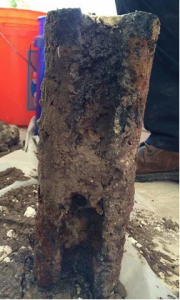
Figure B – The bottom of this pipe has rotted away from long-term water flow and from chemical drain cleaners that were used to alleviate FOG buildup.
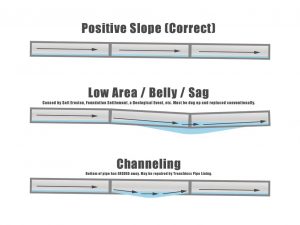
Figure C; shows the differences between positive slope piping versus Channeling.
When slow drains become a problem due to the buildup of grease, often times individuals will pour chemical drain cleaners down the sink in hopes of alleviating the problem. This is one of the worst things that can be done. As you can see in the Figure B, the horizontal pipe’s bottom is completely gone. This is called “channeling”. Channeling occurs when water flows over the bottom of the pipe over a long period of time. Chemical drain cleaners are highly corrosive and will substantially accelerate corrosion.
Stop FOG Today!
In conclusion, exercising good habits when it comes to disposal of fats, oils and grease when cooking can be all of the prevention you need. Restaurants and other commercial buildings should utilize a Grease Interceptor to prevent major problems from FOG buildup. If your home, condominium or building is in a situation where grease has built up in your pipes and is causing issues, the solution is likely going to involve cleaning the system with a hydro-jetter and potentially lining the bad pipes or replacing them.
Campbell & Company is proud to offer the finest plumbing services available for our customers in the Tri-Cities and Yakima area. No matter how big or small of a job you have, our team is ready to assist you in a prompt and professional manner.
Sign up for our monthly Plumbing Service Partner Plan and receive an annual maintenance inspection!

